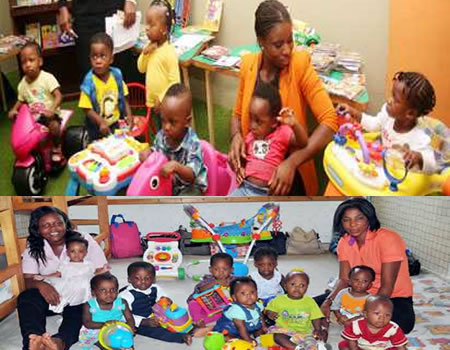Daycare facilities are becoming more and more necessary to care for young children. At the same time, both parents work, as a result of the necessity for women to participate in the economic advancement of the family and the rise in working mothers in our culture.
A lot of parents are aware that their kids frequently return home from childcare centres experiencing bouts of diarrhoea and skin ailments. It is sometimes ignored that certain youngsters are more susceptible to the diseases flying around these facilities than others.
However, a recent study has connected young children’s wheezing to a specific combination of germs present in the dust at daycare centres.
Wheezing in young children is often an early sign of asthma, allergies, or infections.
The latest research provides some insights into the reasons why creche attendance can affect kids’ lung health, which in turn suggests that creche environment circumstances may impact early childhood respiratory health.
A mixture of different bacteria and other microbes live everywhere around us, on our skin, inside our bodies, outside, and inside our homes. These communities of bacteria, known as microbiota, can have beneficial or harmful effects on our health.
Babies, even older kids, inhale and touch the many microorganisms that reside in childcare facilities through their mouths and skin. Therefore, it is anticipated that this exposure will affect how children’s developing skin, stomach, or airways develop.
The ease of spread of communicable diseases generally depends on the environment, the children themselves, and the employees of these daycare centres who take care of these children. Often, these children come home with episodes of diarrhoea, gastroenteritis, chest, and skin diseases.
Dr Funke Oladokun, a consultant paediatrician at the University College Hospital (UCH), Ibadan, in a comment on the state of many daycare centres, said poor ventilation is common in many daycare centres because while the handlers are trying to keep the room warm, they close the doors and windows.
She claimed that all of the windows and doors are open when you arrive in the morning to drop off your kids. But all the doors and windows would be closed in a matter of minutes.
“When you question why this is the case, the usual answer is that it’s cold outside and we don’t want the cold to get inside our kids’ chests. That is what we hear all the time.
“Meanwhile, such claims are not supported by any theory. This obstructs the room’s natural ventilation system, which lets out germs and stale air. We make these children vulnerable to infectious diseases.”
Conversely, Mrs. Folasade Oladele, Oyo State School Health Officer, declared that there are basic health and environmental requirements that all crèches, daycare centres, and schools are supposed to meet before they become operational.
She declared that the physical environment of crèches, daycare centres, and schools is important because it could have a profound effect on their health and learning.
“Since they don’t have a strong body immune system, if one of them has measles, it spreads to the others. If a child has measles in a dirty environment before the day closes, it has transferred to 5 to 10 other children in the classroom,” Mrs Oladele added.
Dr. Matthew Olawuji, a consultant family physician at University College Hospital Ibadan, in a reaction, stated that due to overcrowding and inadequate ventilation, infants at daycare centres with a high baby population are more susceptible to respiratory issues.
He asserted that dust and strong scents worn by caregivers for infants in daycare centres may also be factors in children’s wheezing in these settings, especially those who are more susceptible to allergic reactions.
“There are some daycares that use rugs. Under rugs, dust collects and may harbour dust mites. Therefore, if they use carpets, they must have them cleaned regularly to prevent dust mites from increasing the baby’s risk of wheezing. Then, we have to take precautions to keep kids away from smoke, especially when cooking indoors.”
For the study, the researchers used an adapted vacuum cleaner to collect samples of dust from the floor of 103 different daycare settings in the Paris region. They used genetic analysis in the laboratory to identify the different types of bacteria found in each sample.
At the same time, they asked the parents of 515 children attending the day care facilities whether their children experienced any respiratory symptoms, such as wheezing. The children were on average two years old.
The researchers were able to group mixtures of microbiota from the daycare centres into four broad categories. Compared to the more prevalent category (a combination of Streptococcus, Neisseria, and Haemophilus bacteria), one of these categories—where two distinct bacteria termed Streptococcus and Lactococcus were dominant—was associated with a higher risk of wheezing.
No doubt, a good daycare can keep its environment in good working order, free from all preventable epidemics. It all starts with proper hand hygiene and environmental hygiene. In actuality, caring for infants takes more expertise and focus due to their small stature and susceptibility to infection from germs that come into contact with them.
ALSO READ: Video: We’ve what it takes to turn around Nigeria’s economy in months — Dangote
